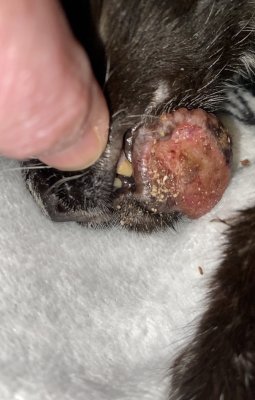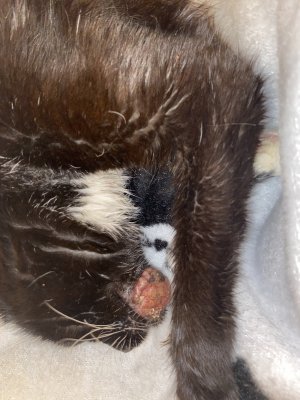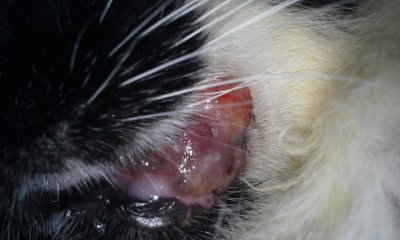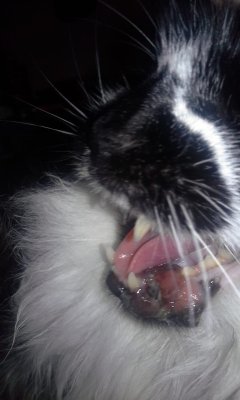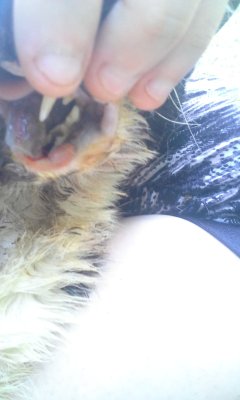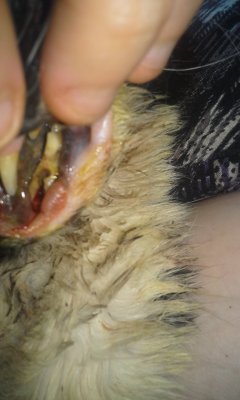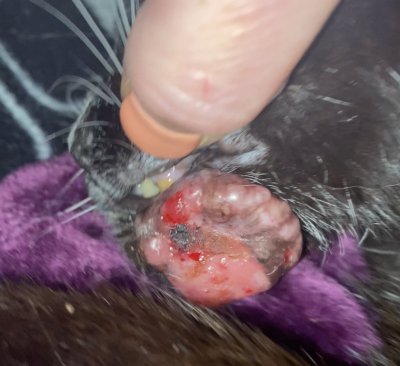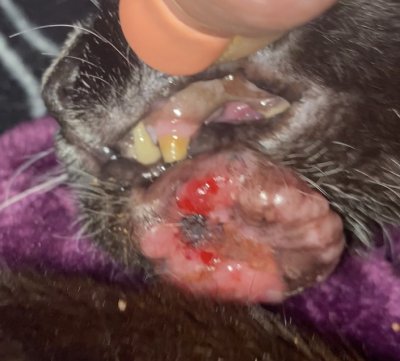- Joined
- May 29, 2021
- Messages
- 16
- Purraise
- 7
Hi,
I have an 18 year old cat that has a cancerous growth on her chin. She has been to the vet, and animal dermatologist. I have been told it’s cancer and it can not be removed because she has a heart murmur and high blood pressure which she is on medication for. If I put her under the vet said there is a high chance she won’t wake up. I have no choice but to leave it alone.
She still eats and drinks on her own, is not in pain, but her food gets stuck on the growth and I have to clean it which irritates it. I feel horrible not doing anything as it gets bigger and I don’t know what else I can do to help her. She isn’t suffering. Any suggestions would be helpful. I have attached a picture of the growth…just a warning is not a pretty growth.
I have an 18 year old cat that has a cancerous growth on her chin. She has been to the vet, and animal dermatologist. I have been told it’s cancer and it can not be removed because she has a heart murmur and high blood pressure which she is on medication for. If I put her under the vet said there is a high chance she won’t wake up. I have no choice but to leave it alone.
She still eats and drinks on her own, is not in pain, but her food gets stuck on the growth and I have to clean it which irritates it. I feel horrible not doing anything as it gets bigger and I don’t know what else I can do to help her. She isn’t suffering. Any suggestions would be helpful. I have attached a picture of the growth…just a warning is not a pretty growth.
Attachments
-
851 KB Views: 63
-
1.8 MB Views: 71

